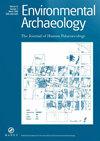中世纪城镇的自然与文化
IF 1.1
3区 地球科学
0 ARCHAEOLOGY
引用次数: 0
摘要
本期特刊收录了由挪威文化遗产研究所(NIKU)于2019年3月6日至7日在奥斯陆举办的题为“中世纪城镇的自然与文化”会议上发表的论文。本期特刊介绍了四篇论文,探讨了自然和文化之间的动态如何影响和被影响,在北大西洋地区,特别是在中世纪的英格兰和挪威,中世纪城市定居点的发展。通过对新的和以前已知的考古数据的跨学科讨论,并与书面资料并立,并从新颖的理论角度进行见解,使我们能够对上述动态有更深入的了解。对中世纪城市遗址的关注变得非常重要,因为最近环境史的趋势是促进对更多样化的社会和人口背景的研究,因为这些背景不可避免地与环境联系在一起,由环境形成,并形成了它们所处的环境。在中世纪,环境当然承受着压力,并且由于集中化和城市化的加剧等因素而发生了变化。中世纪城镇是最早留下独特“生态足迹”的机构之一,因为它们依赖于与周围生态系统加强的能源(食物、水、燃料)、材料(木材、石头、原材料)和废物的交换。城镇也是政治、行政、经济和宗教活动的主要焦点,也是关于社会和人们在环境中的位置的描述性和规范性叙述经常(但不是唯一)被书写的地方。中世纪的城市化与环境密不可分,包含了生态和文化的创新,这些创新永久地改变了自然-文化的动态,形成了现代城市发展的历史背景。在第一篇文章“中世纪英格兰的城市基础设施与环境风险”中,罗伯塔·j·马格努森解释了在中世纪晚期的大转型时期,基础设施的可持续性如何成为英格兰的一个尖锐问题。从中世纪气候异常期到小冰河期的转变导致了更加不稳定的天气波动,并增加了严重风暴的频率和强度。不断上升的基础设施成本与不断减少的资源之间的规模不匹配日益加剧,这不仅仅是另一个可以通过重新调动传统复苏机制来纠正的波动。如果中世纪的城市基础设施要存活到现代早期,它们以及支持它们的组织系统将需要重新配置和重组。本文讨论了环境危害如何威胁中世纪英格兰的三种类型的城市基础设施:碎石核心城墙,拱形砖石桥和海港装置,以及中世纪城镇居民寻求维持这些公共工程的方式。在第二篇文章中,Axel Christophersen认为,为了更好地理解城市生态系统的动态和变化,需要从人与环境之间的社会、文化、精神和物质相互作用的长期角度进行研究。本文讨论了中世纪版本的“自然”概念,以探索(1)中世纪的心态如何决定人们对自然的态度,(2)当“自然”反叛时,这些心态如何影响行动和不行动。考古学家、历史学家、生物考古学家、遗传学家和流行病学家对中世纪特隆赫姆进行了一项案例研究,研究了人类、植物和动物遗骸以及旨在预防城市景观中传染性疾病的物理干预措施(排水、废物处理等)。这项调查提供了对中世纪挪威城市社区和当局在流行病和气候驱动的饥荒中如何采取行动的新理解。Per Christian Underhaug的文章讨论了公元1050-1250年期间的水管理系统如何塑造了中世纪早期挪威西部卑尔根的城市和社会空间。对最近发掘的考古材料、相关文字资料和最近的地质数据的分析表明,来自降雨、河流和溪流的丰富水资源是卑尔根早期城市发展的一个非常重要的资源。调节和排水的干预被认为是必要的,并有助于中世纪城镇的组织。最近的挖掘发现了11世纪及以后的水管理系统,提供了新的和以前未知的本文章由计算机程序翻译,如有差异,请以英文原文为准。
Nature and Culture in Medieval Towns
This special issue comprises papers presented at the conference titled ‘Nature and Culture in Medieval Towns’, arranged by the Norwegian Institute for Cultural Heritage Research (NIKU) and held in Oslo on the 6th–7th March 2019. This special issue presents four papers that explore how the dynamics between nature and culture both affected, and was affected by, the development of medieval urban settlements in the North Atlantic region, and more specifically in medieval England and Norway. Insights through interdisciplinary discussions of new and previously known archaeological data, in juxtaposition to written sources, and from novel theoretical perspectives, allow us to gain a deeper knowledge of the aforementioned dynamics. The focus on medieval urban sites becomes significant due to the recent tendencies in environmental history to promote the study of more varied social and demographic contexts as these are inevitably linked to, formed by, and forming back the environment within which they are created. In the Middle Ages, the environment was certainly under pressure and was transformed by, among other factors, intensified centralisation and urbanisation. Medieval towns were some of the first institutions that left a distinct ‘ecological footprints’, as they were dependent on the intensified exchange of energy (food, water, fuel), material (wood, stone, raw material) and waste with the surrounding ecosystems. Towns were also the main foci of political, administrative, economic, and religious activities, and the places where descriptive and prescriptive narratives about the society and people’s place in the environment were often (but not exclusively) written. Medieval urbanisation, inseparable from its environment, encompassed ecological and cultural innovations that changed nature-culture dynamics permanently and formed the historical background for modern urban development. In the first article, ‘Urban Infrastructures & Environmental Risk in Medieval England’, Roberta J. Magnusson accounts for how infrastructure sustainability became an acute problem in England during the Great Transition of the late Middle Ages. The shift from the Medieval Climate Anomaly to the Little Ice Age led to more erratic weather fluctuations and amplified the frequency and violence of severe storms. A growing mismatch in scale between rising infrastructure costs and declining resources was not just another wobble that could be corrected by a renewed mobilisation of traditional recovery mechanisms. If medieval urban infrastructures were to survive into the early modern world, they, and the organisational systems that supported them, would require reconfiguring and restructuring. This article addresses how the environmental hazards threatened three types of urban infrastructures in medieval England: rubble-core city walls, arched masonry bridges, and maritime harbour fixtures, and the ways in which medieval townsmen sought to sustain these public works. In the second article, Axel Christophersen, argues that a study of the longer-term perspectives of social, cultural, mental, and material interactions between people and environment are needed to better comprehend the dynamics and changes in urban ecosystems. The article discusses the medieval version of the concept of ‘nature’ in order to explore (1) how medieval mentalities determined people’s attitudes to nature and (2) how these influenced action and non-action when ‘nature’ rebelled. This approach is applied to a case study of medieval Trondheim, conducted by archaeologists, historians, bio-archaeologists, geneticists, and epidemiologists, where human, plant and animal remains are studied together with physical interventions (drainage, waste disposal etc.) that aimed to prevent infectious deceases in the urban landscape. This investigation provides a new understanding of how the urban community and authorities acted in the case of epidemics and climate-driven famines in medieval Norway. The article by Per Christian Underhaug discusses how water management systems during the period AD 1050–1250 shaped urban and social spaces in early medieval Bergen, Western Norway. An analysis of archaeological material from recent excavations, relevant written sources, and recent geological data demonstrates that the abundance of water from rainfall, rivers and streams was a very important resource for the development of early urban Bergen. Interventions of regulation and drainage were considered necessary and contributed to the organisation of the medieval town. Recent excavations have uncovered water management systems from the eleventh century and onwards, providing new and previously unknown
求助全文
通过发布文献求助,成功后即可免费获取论文全文。
去求助
来源期刊

Environmental Archaeology
GEOSCIENCES, MULTIDISCIPLINARY-
CiteScore
4.80
自引率
0.00%
发文量
32
期刊介绍:
Environmental Archaeology: The Journal of Human Palaeoecology aims to publish contributions on all aspects of environmental archaeology, from methodology to synthesis and theory.
Environmental Archaeology is an international peer-reviewed periodical which welcomes contributions that consider the interaction between humans and their environment in the archaeological and historical past. This broad scope embraces papers covering a range of environmental specialisms within archaeology, such as archaeobotany, archaeozoology (both vertebrate and invertebrate), palynology, geoarchaeology, biological anthropology, as well as more synthetic and theoretical approaches to the past human environment. Assemblage and site reports are not encouraged unless these can demonstrate significant new insights in environmental archaeology. Contributions may take the form of substantial research papers or shorter reports and may include, for instance, new techniques, philosophical discussions, current controversies and suggestions for new research. The journal also provides its readership with critical appraisal of recent academic scholarship through its regular books review section.
 求助内容:
求助内容: 应助结果提醒方式:
应助结果提醒方式:


